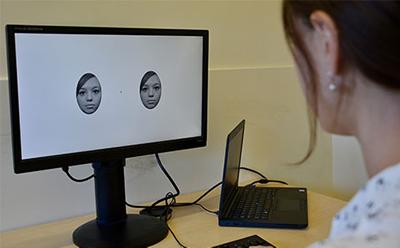
Human perceivers are remarkably adept at face processing generally, and at recognising one another from faces specifically. More modern psychological writing recognises the dual tasks involved in face recognition – telling different instances of one face together, and telling similar instances of separate faces apart. Both are required for successful face recognition to be demonstrated. Equally, more modern literature suggests a stark difference in the processes used, and in the performance levels that are possible, with familiar and unfamiliar faces.
More generally, tests of human capability suggest that we are able to recognise individuals despite small changes in age, expression, pose, lighting, and distance. Some claim optimal performance from a ¾ profile from which information about the relief of the nose can be gleaned, and from which the ear starts to become visible. There is also evidence to suggest that we rely more on internal features when faces are familiar, but we rely more on external features when faces are unfamiliar.
All these factors combine to enable the human perceiver to achieve a remarkable level of expertise when recognising faces. The Hummingbird Project will start to capture these human-like processes within optimised machine algorithms as a way to enhance machine capability.